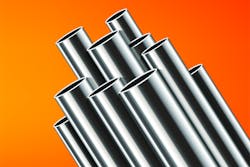Application Corner: Natural gas flow measurement, part 2
The North American Energy Standards Board (NAESB) description of a typical natural gas composition was provided in previous columns. However, as discussed last month, the composition of natural gas can be different than typical at different locations, plus, to complicate the issue, it can vary over time. This situation begs the question of how natural gas compositions that are different from typical can affect the measurement of the flow of natural gas — both personally and professionally. Having examined the personal side (as a customer) last month, let’s consider the professional side.
Natural gas is typically transported over long distances in high-pressure natural gas transmission pipelines that often operate outdoors and/or underground at temperatures that are not controlled. Further, the operating pressure — aside from being high — varies along the pipeline as the natural gas is compressed at multiple locations before succumbing to downstream pressure losses. As such, accurate flow measurement entails a larger magnitude of compensation for pressure and/or temperature than would occur in a residential diaphragm flowmeter located downstream of a low-pressure pressure regulator installed in a conditioned residential space.
The selection of a particular flowmeter technology is often dependent upon the application at hand. Coriolis mass, differential pressure, positive displacement and turbine flowmeters are often specified for custody transfer applications in natural gas service. These and other technologies can be applied to flow measurements used for operational purposes such as the addition of odorant and combustion control. Insertion turbine, thermal and vortex shedding flowmeters are also available.
David W. Spitzer is a principal at Spitzer and Boyes, LLC, which offers engineering, focused market research, writing/editing white papers, strategic marketing consulting, distribution consulting, seminars and expert witness services for manufacturing and automation companies. Spitzer has written more than 400 technical articles and 10 books about flow measurement, instrumentation and process control. He can be reached at 845-623-1830 or via spitzerandboyes.com.
David W. Spitzer
David W Spitzer’s new book Global Climate Change: A Clear Explanation and Pathway to Mitigation (Amazon.com) adds to his over 500 technical articles and 10 books on flow measurement, instrumentation, process control and variable speed drives. David offers consulting services and keynote speeches, writes/edits white papers, presents seminars, and provides expert witness services at Spitzer and Boyes LLC (spitzerandboyes.com or +1.845.623.1830).



